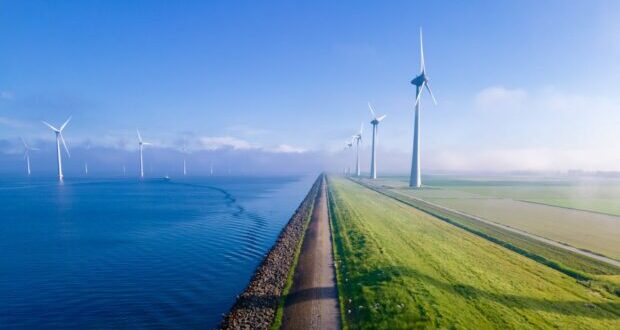While solar and wind power installations and power generation are booming in Europe, policymakers need to address the growing gap between baseload capacity and soaring intermittent renewable electricity. Europe still has a lot of work to do in providing flexible and reliable grids to handle the soaring share of renewables in electricity generation and consumption.
Last month, the European Union saw a record-low power generation from fossil fuels and a record-high share of renewables in the electricity mix, energy think tank Ember says. In April 2024, fossil fuels produced less than a quarter of EU electricity for the first time, while the share of renewables, at a record-high for a single month at 54%, was boosted by wind and solar and a recovery in hydropower compared to April 2023, when droughts had diminished the hydropower share of generation.
But what happens to wind and solar generation when it is cloudy and windless? It dips and has to be compensated by either other sources of power generation or energy storage.
Europe, and the rest of the world, need solutions to tackle the intermittency in wind and solar generation and to expand and overhaul grids so that they are capable of handling surging renewable capacity. Essentially, if the booming wind and solar power doesn’t have a way to access the grid, it’s pointless to tout the record-breaking capacity additions.
Policymakers in Europe and elsewhere need to plan better how to make the most of the renewables boom. Curtailments of renewables generation at times of excess supply or filling the gap with fossil fuels in case of unfavorable weather for wind and solar power are band-aid solutions that don’t help the energy transition.
Grid investments are lagging behind renewable additions and a lack of transmission capacity could hold back the energy transition, Ember said in a report earlier this year.
“Making sure solar and wind can actually connect to the system is as critical as the panels and turbines themselves,” says Elisabeth Cremona, Energy & Climate Data Analyst at Ember.
“There is no transition without transmission.”
The EU and the world as a whole are unprepared for the massive roll-out of wind and solar—investments in grids are currently insufficient to handle the boom, while energy storage is also behind the curve of renewable power generation.
In periods of still and overcast weather, solar and wind power generation dips. But these periods cannot be predicted too far out in time, so back-ups are needed.
“We recognise that climates are changing, so how often these will occur is a bit hard to know,” Brent Wanner, head of the power sector unit at the International Energy Agency (IEA), told the Financial Times, referring to the so-called ‘Dunkelflaute’, the German term for windless cloudy weather that limits wind and solar generation.
“But being ready for these kinds of periods should be part of the planning,” Wanner said.
However, Europe’s grids were not built to handle massive new loads of electricity generation and demand.
“As Europe ramps up renewable energy deployment and increasingly electrifies the economy, electricity production and demand are expected to double by 2050,” Agora Energiewende, a think tank, said in a report last month.
“A high number of additional generators and consumers will be connected to the power grid at the distribution level. This poses challenges to the existing infrastructure which was not built to handle such increased loads.”
Europe’s grid faces increasing pressure, “which is slowing down the integration of additional renewable energy and the switch to electric applications,” according to the study prepared by Agora Energiewende and consultancy DNV.
“One of the main reasons are lacking regulatory and financing frameworks which are partly to blame for poor long-term planning at the DSO-level, leading to the insufficient deployment of the energy infrastructure,” the report notes.
Unless Europe accelerates grid investments and planning and boosts energy storage deployment, its record-high wind and solar power installations and generation will only be statistics for clean energy proponents to tout without really advancing the energy transition.

offshore windmill park with clouds and a blue sky, windmill park in the ocean aerial view with wind turbine Flevoland Netherlands Ijsselmeer. Green energy ; Shutterstock ID 2064279029; purchase_order: Energy Voice; job: Brian Wilson col May 23
 Iran Energy News Oil, Gas, Petrochemical and Energy Field Specialized Channel
Iran Energy News Oil, Gas, Petrochemical and Energy Field Specialized Channel



